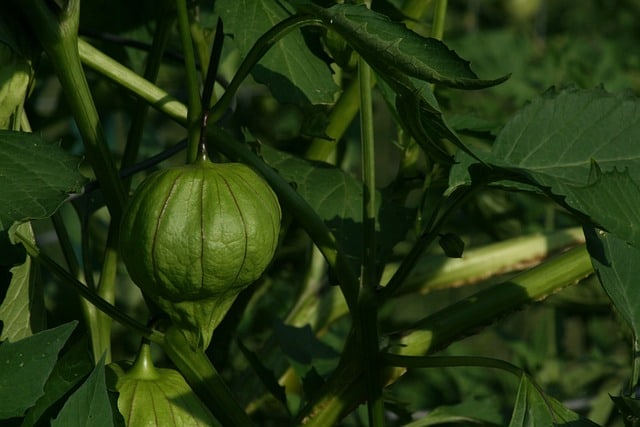Tomatillos are a popular ingredient in Mexican cuisine, prized for their tangy flavor and versatility in dishes such as salsas, soups, and stews. However, if you’re growing tomatillos in your garden, you may notice tomatillos turning yellow.
This can be a cause for concern, as it may indicate a problem with the plant’s health or growing conditions.
Understanding tomatillos is key to troubleshooting any issues that arise during their growth. Tomatillos are members of the nightshade family, related to tomatoes and peppers.
They are native to Mexico and Central America and require warm temperatures to thrive. Tomatillo plants are typically bushy and grow up to 4 feet tall, producing small green fruits that are encased in a papery husk.
While tomatillos are relatively easy to grow, they can be susceptible to various pests and diseases that can cause the leaves and fruits to turn yellow.
Related posts:
Understanding Tomatillos
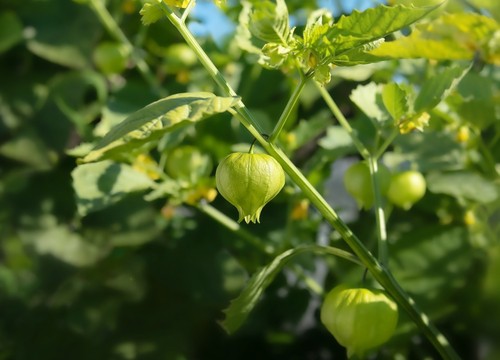
Tomatillos are a type of fruit that belongs to the nightshade family. They are native to Mexico and Central America and have been cultivated for centuries. The fruit is typically green and is covered by a papery husk that needs to be removed before consumption.
Tomatillos are an excellent source of vitamins and minerals and are known for their tangy and slightly sweet flavor.
Tomatillos are easy to grow and can be planted in a variety of soil types. They require full sun and regular watering, but overwatering can lead to yellowing of the leaves. It is important to note that tomatillo plants are susceptible to pests and diseases, so proper care is essential for healthy growth.
The tomatillo fruit is an excellent source of vitamin C, which is essential for a healthy immune system. It is also rich in potassium, which helps regulate blood pressure and supports heart health. Tomatillos are also a good source of fiber, which aids in digestion and helps keep you feeling full for longer periods.
In addition to their nutritional benefits, tomatillos are also a versatile ingredient in the kitchen. They can be used in a variety of dishes, including salsas, stews, and sauces. The tangy flavor of tomatillos pairs well with spicy and savory ingredients, making them a popular ingredient in Mexican cuisine.
Why Tomatillos Turn Yellow
Tomatillos are a popular ingredient in Mexican cuisine, with their tart flavor and distinctive texture. However, one common problem that gardeners face is when their tomatillo plants start to turn yellow. In this section, we will explore some of the most common reasons why tomatillos turn yellow and what you can do to prevent it.
1. Overwatering
Overwatering is one of the most common reasons why tomatillo leaves turn yellow. When plants are overwatered, they are unable to absorb the necessary nutrients like nitrogen, which leads to yellowing leaves. If the older leaves are yellow and the newer leaves are green, it is likely due to overwatering.
Tomatillos need about an inch of water per week, so it’s important to water them appropriately.
2. Nutrient Deficiencies

Tomatillo plants require certain nutrients to grow properly, and a deficiency in any of these nutrients can cause yellowing leaves. One nutrient that is particularly important for tomatillos is magnesium.
A magnesium deficiency can cause the leaves of your plants to turn yellow, starting with the older leaves and progressing to the younger ones. To remedy this issue, you can apply a magnesium-rich fertilizer or supplement, such as Epsom salt, to your soil.
3. Pest Infestations
Another reason why tomatillos turn yellow is due to pest infestations. The most common pest that affects tomatillos is the psyllid, which causes a condition known as “psyllid yellows.”
This condition causes the leaves to turn yellow and curl up, and can eventually kill the plant. To prevent psyllid infestations, it’s important to keep your garden clean and free of debris, and to use insecticides as necessary.
4. Natural Process
Sometimes, tomatillo leaves turn yellow as a natural process as the plant absorbs nutrients from the dying leaves. However, if the yellowing is excessive or accompanied by other symptoms, it’s important to investigate further to determine the underlying cause.
Growing Conditions for Tomatillos
Tomatillos are a warm-season crop that requires a specific set of growing conditions to thrive. Here are some key factors to consider when growing tomatillos:
1. Soil
Tomatillos prefer well-draining soil with a pH between 6.0 and 7.5. They don’t tolerate wet feet, so it’s important to avoid overwatering and ensure good drainage. Adding organic matter, such as compost or well-rotted manure, can help improve soil structure and fertility.
2. Sunlight
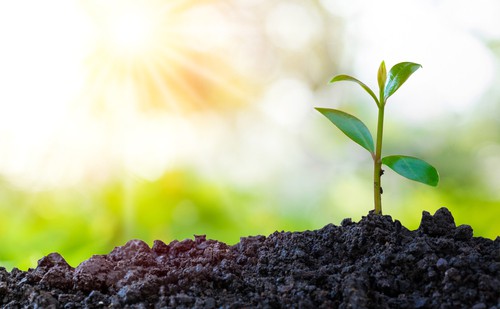
Tomatillos need plenty of sunlight to grow and produce fruit. They require at least 6 hours of full sun per day, but 8 to 10 hours is ideal. Be sure to choose a sunny location for your tomatillo plants.
3. Watering
Tomatillos need regular watering to keep the soil moist, but not waterlogged. They are sensitive to drought, so it’s important to water them deeply and consistently, especially during dry spells. Avoid overhead watering, which can increase the risk of fungal diseases.
4. Temperature and Humidity
Tomatillos are native to Mexico and Central America, so they prefer warm temperatures and high humidity. They can tolerate temperatures up to 90°F, but may suffer in extreme heat. They are also sensitive to frost and should be protected or harvested before the first frost.
5. Growing Tomatillos
Tomatillos are typically grown from seed and can take 70 to 100 days to mature. They grow 3 to 4 feet tall and wide, so they need plenty of space to spread out. Staking or caging can help support the plants and prevent them from sprawling.
Nutrient Requirements
Tomatillos have specific nutrient requirements that need to be met to ensure healthy growth and prevent yellowing of leaves. The most important nutrients for tomatillos are magnesium, nitrogen, and potassium.
1. Magnesium
Magnesium is crucial for tomatillos as a deficiency can cause leaves to turn yellow, starting with the older leaves and progressing to the younger ones. To remedy this issue, a magnesium-rich fertilizer or supplement, such as Epsom salt, can be applied to the soil.
Magnesium is also important for photosynthesis and helps to regulate other nutrients in the plant.
2. Nitrogen
Nitrogen is essential for plant growth and development, and a lack of nitrogen can cause leaves to turn yellow and stunt plant growth. To ensure that tomatillos have enough nitrogen, a balanced fertilizer with a high nitrogen content can be applied to the soil.
Compost or other organic matter can also be added to the soil to provide a slow-release source of nitrogen.
3. Fertilizers

Fertilizers are an important tool for ensuring that tomatillos have the necessary nutrients for healthy growth. However, it is important to use them in moderation and follow the instructions carefully to avoid over-fertilizing, which can cause more harm than good.
4. Potassium
Potassium is important for plant growth and helps to regulate water uptake and nutrient transport. A deficiency in potassium can cause leaves to turn yellow, and the edges of the leaves may become brown and crispy. To remedy this issue, a potassium-rich fertilizer can be applied to the soil.
5. Nutrient Deficiency
If tomatillo plants are not getting enough of the necessary nutrients, their leaves will start to show signs of deficiency, including yellowing. It is important to regularly monitor the plants and address any nutrient deficiencies promptly.
6. Manganese
Manganese is another important nutrient for tomatillos, and a deficiency can cause yellowing of leaves. However, it is important to note that too much manganese can be toxic to plants, so it is important to ensure that the plants are not receiving an excess of this nutrient.
Common Diseases and Pests
Tomatillos are susceptible to various diseases and pests. Regular monitoring and taking appropriate measures can help prevent further damage.
1. Diseases
Bacterial spot, early blight, and powdery mildew are common diseases that affect tomatillos. Bacterial spot causes water-soaked spots on leaves and fruits. Early blight causes brown spots on leaves and stems. Powdery mildew causes white powdery spots on leaves and stems.
To prevent bacterial spot, avoid overhead watering and remove infected plant debris. To prevent early blight, practice crop rotation and remove infected plant debris. To prevent powdery mildew, provide adequate air circulation and avoid overhead watering.
2. Pests

Aphids, whiteflies, spider mites, and fruitworms are common pests that affect tomatillos. Aphids and whiteflies suck sap from leaves, causing them to wilt and yellow. Spider mites cause yellow stippling on leaves. Fruitworms cause premature fruit drop.
To prevent aphids, whiteflies, and spider mites, use insecticidal soap or neem oil. To prevent fruitworms, handpick and destroy affected fruits.
3. Rot and Mold
Rot and mold are also common problems that affect tomatillos. Overwatering and poor air circulation can cause fruit rot. Gray mold can develop on damaged or overripe fruits.
To prevent fruit rot, avoid overhead watering and provide adequate air circulation. To prevent gray mold, remove infected fruits and debris.
Harvesting and Using Tomatillos
When it comes to harvesting tomatillos, it’s important to know when they are mature and ready to pick. Tomatillos are typically harvested when they are still green and firm to the touch. However, some varieties may turn yellow or purple when they are ripe.
To harvest tomatillos, simply remove the papery husk that surrounds the fruit. The fruit should be firm and free of blemishes. If the tomatillos are still green, they are ready to be used in a variety of dishes, such as salsas, stews, and Mexican cuisine.
Tomatillos have a subtle flavor that is slightly tangy and sweeter than tomatoes. They are a staple in Mexican dishes and are often paired with spicy ingredients such as serrano peppers and cilantro. Tomatillos can also be used to add a unique flavor to soups, stews, and sauces.
When using tomatillos in recipes, it’s important to keep in mind that they are not as acidic as tomatoes. This can affect the flavor of the dish and may require adjustments to the recipe. However, tomatillos can be a great alternative for those who are looking for a milder flavor than traditional tomatoes.
Troubleshooting Issues
Tomatillos are generally easy to grow, but like any plant, they can run into issues. Here are some common problems gardeners might encounter when growing tomatillos and how to troubleshoot them.
1. Yellowing Leaves
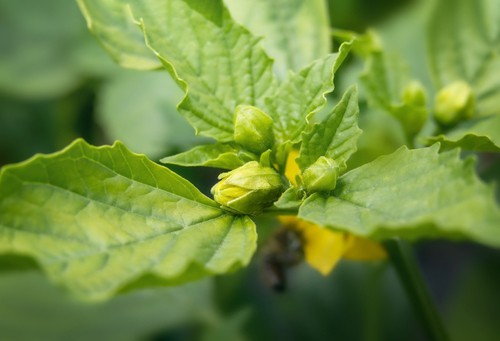
Yellowing leaves are a common issue with tomatillos. This can be caused by a variety of factors, including overwatering, lack of water, nutrient deficiencies, or root asphyxiation.
If the leaves are yellowing and dropping off, it could be due to a lack of water. If the leaves are turning yellow but not dropping off, it could be due to overwatering.
One nutrient that is particularly important for tomatillos is magnesium. A magnesium deficiency can cause the leaves of your plants to turn yellow, starting with the older leaves and progressing to the younger ones.
To remedy this issue, you can apply a magnesium-rich fertilizer or supplement, such as Epsom salt, to your soil. Nitrogen deficiency can also cause yellowing of the foliage. Increasing the Nitrogen content in the soil can help.
2. Lack of Fruiting
If your tomatillo plants are not producing fruit, it could be due to a lack of pollination. Tomatillos are not self-fertile and need at least a couple of other plants nearby to cross-pollinate. If you only have one tomatillo plant, it will not produce fruit.
3. Pests and Diseases
Tomatillos are relatively disease-resistant, but they can still be affected by pests and diseases. One common pest that can affect tomatillos is the potato beetle. These insects are named because they prefer targeting potato plants, but tomatillos are also their favorite.
Potato beetles are around 1/4 inch long, are orange to yellow, and have stripes running lengthwise. To control potato beetles, you can handpick them off your plants or use an insecticide.
4. Other Issues
Other issues that can affect tomatillos include dropping flowers, which can be caused by cool temperatures or lack of water, and poor growth, which can be caused by nutrient deficiencies or compacted soil. Adding compost to your soil can help improve soil structure and fertility, which can help prevent these issues.
Frequently Asked Questions
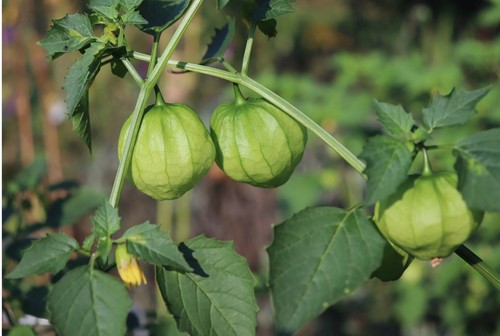
How can I prevent tomatillo fruit from turning yellow prematurely?
To prevent tomatillo fruit from turning yellow prematurely, it is important to pick them at the right time. Tomatillos are ready to be picked when they have filled out their husks and the husks have turned from green to brown and are starting to split open.
If you wait too long to pick them, they will start to turn yellow and become overripe.
What causes yellow spots on tomatillo leaves?
Yellow spots on tomatillo leaves can be caused by a variety of factors, including fungal diseases, nutrient deficiencies, and insect infestations.
One common fungal disease that causes yellow spots on tomatillo leaves is early blight. Early blight is caused by a fungus that attacks the leaves and causes circular yellow spots with dark borders.
To prevent early blight, it is important to keep the plants dry and to remove any infected leaves.
What is the best way to treat tomatillo edema?
Tomatillo edema is a condition that causes the leaves to become swollen and blistered. It is caused by an overabundance of water in the plant. To treat tomatillo edema, it is important to reduce watering and to improve drainage.
Mulching around the base of the plant can also help to prevent excess water from accumulating around the roots.
How can I tell if my tomatillos are still good after turning yellow?
Tomatillos that have turned yellow are still good as long as they are not overripe. Overripe tomatillos will be mushy and have a bad smell. To check if a tomatillo is still good, gently squeeze it.
If it is firm and has a slight give, it is still good. If it is mushy or has a bad smell, it is overripe and should be discarded.
Do tomatillos ripen further after being picked?
Tomatillos do not ripen further after being picked. They will continue to turn yellow as they age, but they will not become sweeter or more flavorful. It is important to pick tomatillos at the right time to ensure that they are at their peak flavor and texture.
What are the common causes of tomatillo wilting?
Tomatillo wilting can be caused by a variety of factors, including overwatering, underwatering, root rot, and insect infestations. Overwatering can cause the roots to become waterlogged and lead to wilting.
Underwatering can cause the plant to become dehydrated and also lead to wilting. Root rot is caused by a fungus that attacks the roots of the plant and causes them to rot. Insect infestations can also cause wilting by damaging the leaves and stems of the plant.

Hey, I’m Lisa and I’ve been an avid gardener for over 30 years. I love writing, talking and living in the garden! Feel free to connect with me on my socials below

